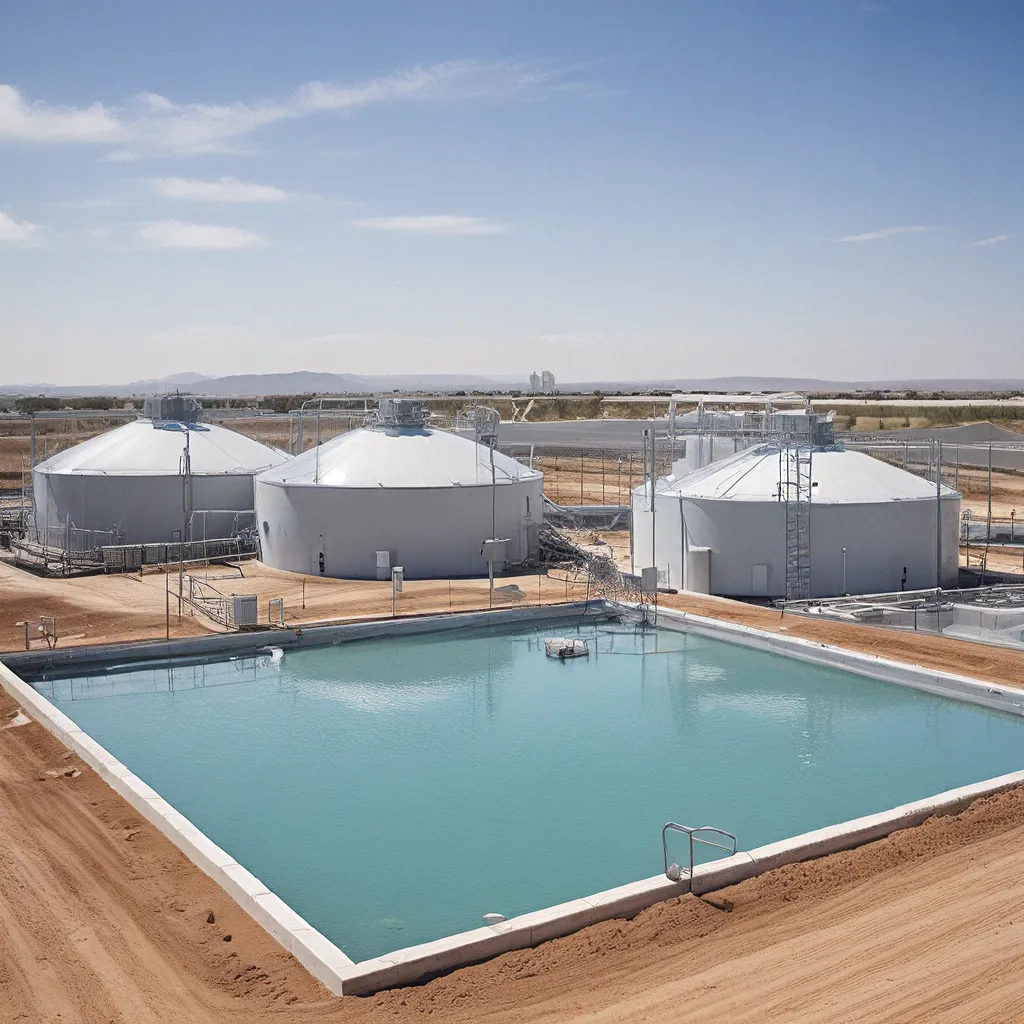
As the world grapples with the escalating impacts of climate change, the race to secure a sustainable future has never been more critical. At the heart of this challenge lies the urgent need to address our global water crisis – a complex web of issues that threaten the very foundations of our societies, economies, and ecosystems. But fear not, my friends, for a revolution is underway, and it comes in the form of innovative water treatment solutions that hold the key to unlocking a brighter, more resilient tomorrow.
Diving into the Heart of the Water Crisis
Let’s start by acknowledging the grim reality we face. The United Nations reports that by 2025, half of the world’s population will be living in water-stressed areas. Droughts, floods, and water-borne diseases are becoming increasingly prevalent, while aging water infrastructure and industrial pollution continue to compromise the quality and availability of this precious resource. The World Water Week organization has been sounding the alarm, urging us to take decisive action.
But amidst this seemingly bleak landscape, a glimmer of hope emerges. Across the globe, pioneers in water treatment are harnessing the power of cutting-edge technologies to tackle these daunting challenges head-on. From advanced membrane filtration systems to smart sensor networks and AI-powered water management, these innovations are poised to revolutionize the way we approach water sustainability.
Unlocking the Potential of Membrane Filtration
One of the most promising frontiers in water treatment lies in the realm of membrane filtration. These advanced systems utilize semi-permeable barriers to selectively remove contaminants, salts, and microorganisms from water, delivering high-quality, purified H2O. Inland Waters, Inc., a leading provider of water treatment solutions, has been at the forefront of this technological revolution.
“The beauty of membrane filtration,” explains Sarah, an engineer at Inland Waters, “is its ability to adapt to a wide range of water sources and treatment needs. Whether it’s removing heavy metals from industrial wastewater, desalinating brackish groundwater, or purifying municipal supplies, these systems can be tailored to the specific challenges at hand.”
Indeed, the versatility of membrane technology is truly remarkable. By leveraging materials like reverse osmosis, nanofiltration, and ultrafiltration, water treatment plants can now remove an impressive array of contaminants, from dissolved salts and heavy metals to pathogens and organic compounds. And with continuous advancements in membrane materials and module design, the efficiency and cost-effectiveness of these systems continue to improve.
Harnessing the Power of Smart Sensors and AI
But the water treatment revolution doesn’t stop there. The advent of the Internet of Things (IoT) and the integration of Artificial Intelligence (AI) have ushered in a new era of intelligent water management. Across the globe, water utilities are deploying networks of smart sensors to monitor water quality, detect leaks, and optimize distribution systems in real-time.
“The data we’re able to collect and analyze through these sensor networks is truly transformative,” says David, a water resource manager at a municipal utility. “By leveraging advanced analytics and machine learning algorithms, we can now anticipate and respond to water-related challenges with unprecedented speed and precision.”
One such example is the use of AI-powered flood forecasting systems. As Robert Brears, a leading expert in global climate solutions, has highlighted, tools like Google’s Flood Hub are capable of processing satellite imagery, weather data, and historical flood patterns to provide accurate, location-specific predictions. This allows communities to proactively prepare for and mitigate the impacts of extreme weather events, safeguarding precious water resources and infrastructure.
Embracing Circular Water Economies
But the innovative solutions don’t stop there. Across the world, a growing movement is championing the concept of circular water economies – a holistic approach that seeks to minimize waste, maximize resource recovery, and foster sustainable, closed-loop systems.
“The traditional linear model of ‘take, use, and dispose’ is simply no longer tenable,” explains Emma, a sustainability consultant. “By embracing circular economy principles, we can transform wastewater from a liability into a valuable resource, unlocking new opportunities for water reuse, nutrient recovery, and energy generation.”
As Christoph Schuster, a renowned expert in water sustainability, has highlighted, these circular approaches are already yielding impressive results. From industrial parks that recycle wastewater for process cooling to agricultural communities that leverage nutrient-rich effluents to enhance soil fertility, the circular water economy is proving to be a powerful driver of sustainability.
Cultivating a Water-Wise Future
As we look to the future, it’s clear that the path to a sustainable water future lies in our collective embrace of innovative water treatment solutions. By harnessing the power of membrane filtration, smart sensors, AI, and circular economy principles, we can overcome the daunting challenges that lie ahead.
Yet, this journey is far from a solo endeavor. It requires the collaboration of scientists, engineers, policymakers, and everyday citizens to drive the necessary changes. We must continue to invest in research and development, implement supportive policies, and foster a culture of water stewardship.
The road ahead may be long and winding, but with the transformative potential of these cutting-edge technologies, I am filled with hope. Together, we can harness the power of innovation to secure a water-wise future, one that sustains our communities, economies, and the delicate balance of our planet’s ecosystems. The time to act is now, my friends, for the future of our water – and our world – depends on it.


